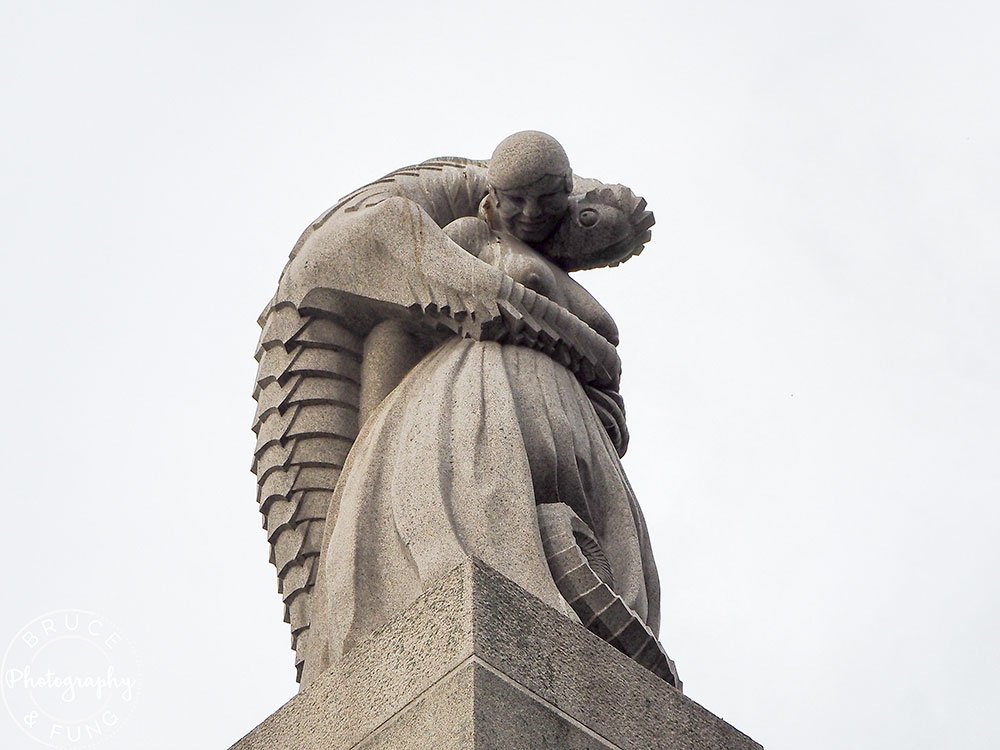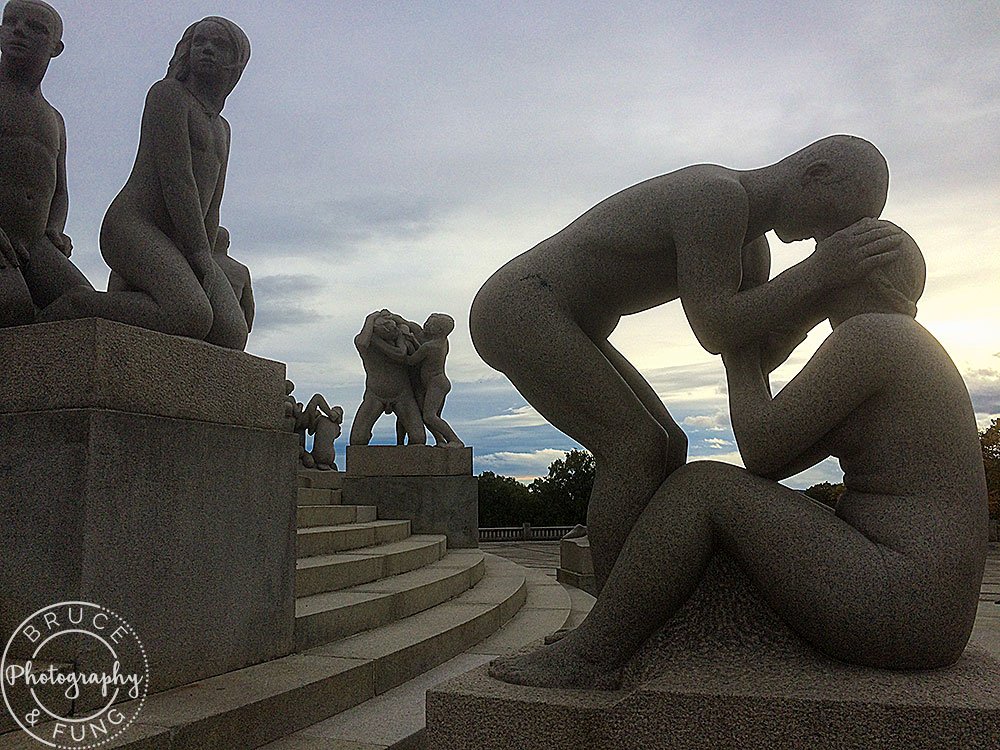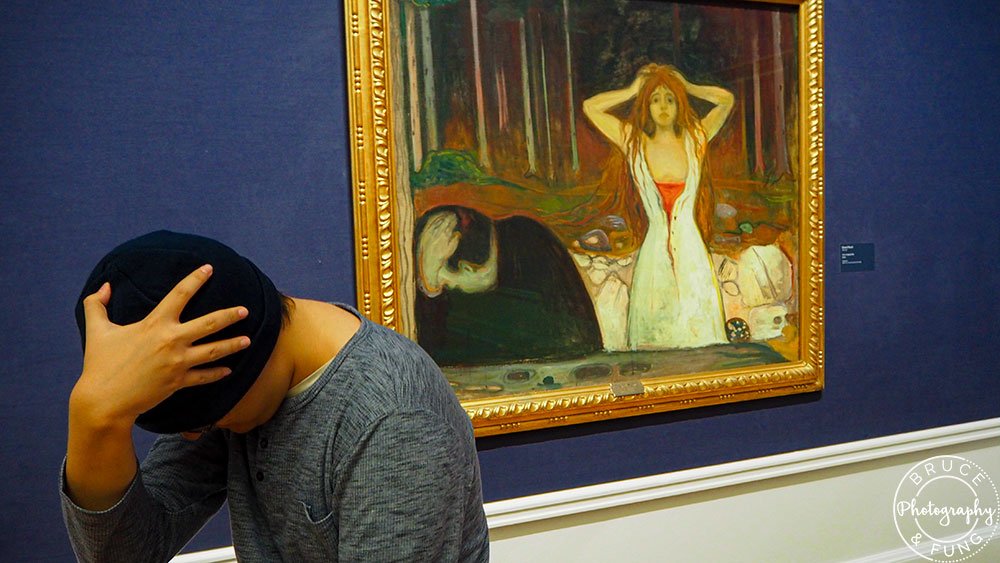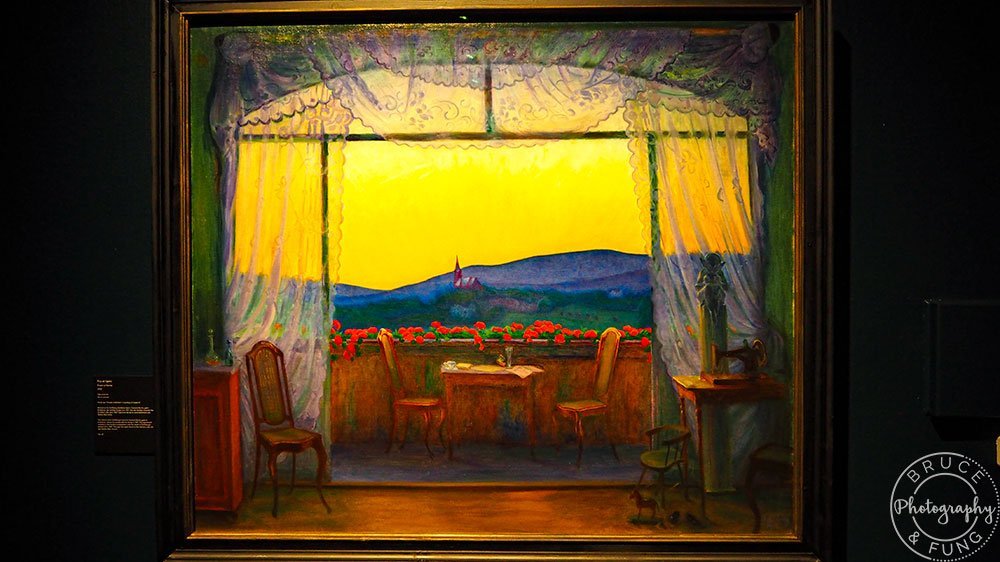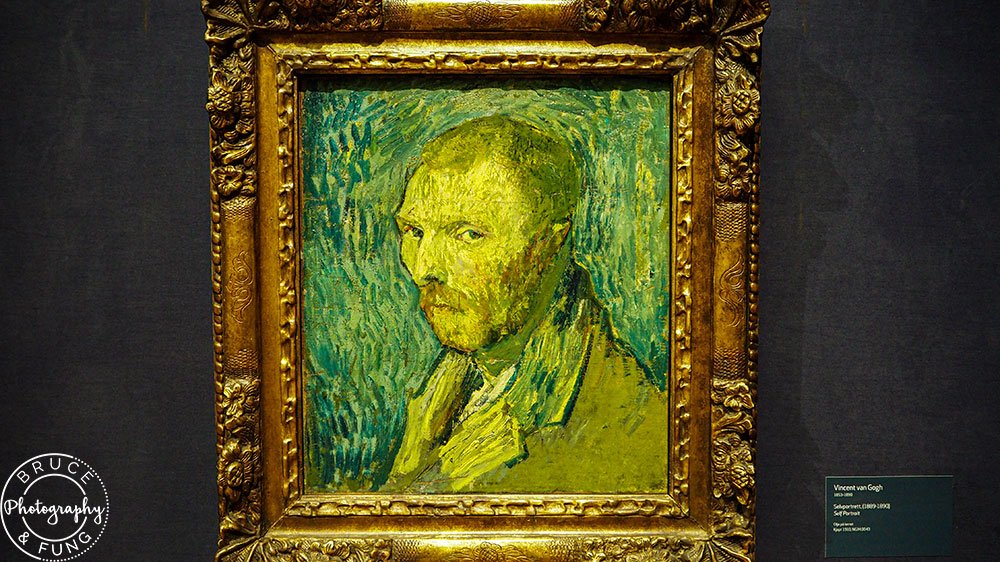A WEEKEND IN OSLO
If one is naming the great cities to visit in Europe, the capital of Norway doesn’t necessarily come to mind high on that list. We had family living in Norway, so spent a weekend in Oslo with them guiding us around a city we knew little of. But we were charmed and had a great time. Oslo is a fabulous place to visit with much to offer. It’s easy to get around, it’s scenic, clean, quiet and safe. It had a great vibe which we picked up on right away after taking the train from the airport into the city. We immediately partook of the famous norwegian salmon, wolfing down tasty sushi before even leaving the bustling station to walk to our hotel.

Above: The Aker Brygge waterfront promenade with the Rådhuset in the background. Top: The Monolith at the Vigeland Sculpture park under darkening autumn skies.
No city is crime-free, but when I noticed an umbrella sitting unattended, left behind by someone and leaning against a park bench in a busy part of downtown, I was told about how things work in Norway. If one sees something obviously left behind, the protocol is to leave it be, in place, with the expectation that the owner will eventually return. Our brother-in-law told us about a student they knew who forgot his school bag on a public bus. Two days later, after another day of classes, he providentially ended up boarding the exact same bus home and lo-and-behold, his school bag was still in his favoured seat. Not only that, but everything was intact, including his Macbook Pro laptop! In how many other cities would that happen?
The only negative is that Norway (like all of Scandinavia) is expensive to visit. Good luck finding a plate of food in a restaurant for less than 25 Euros. Fast food costs more here than sit-down proper meals in many southern European destinations. And don’t get us started on restaurant prices for beer and wine. But at least the quality of what you get is high. We may have paid quite a bit more for restaurant meals on average that in other European capitals, but it was all of a high standard. Wonderfully fresh seafood was a highlight.

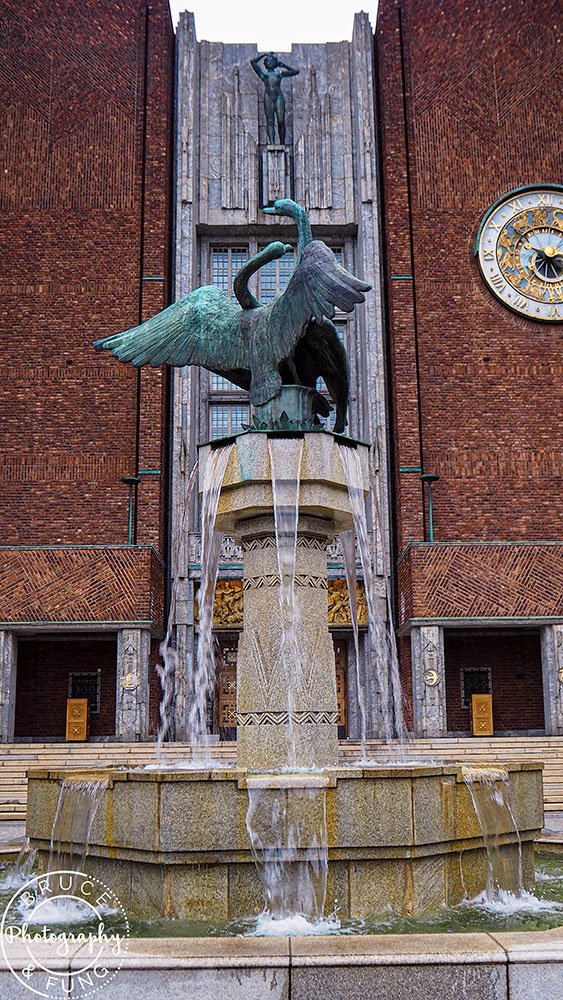
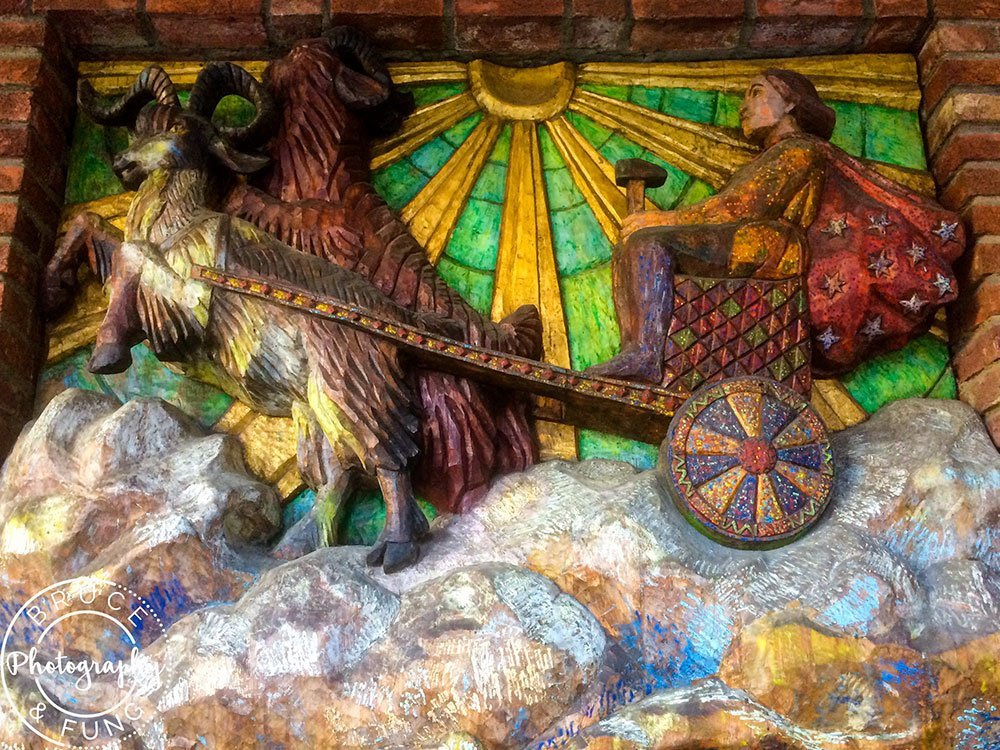
Above: This is Thor, depicted in carved form as part of a series on norse mythology displayed outside the entrance of the Rådhuset. You may notice that this version is rather different to the Thor depicted in Marvel films. If Chris Hemsworth rode on a cart pulled by two goats, we must’ve missed that bit. Top left: A statue of writer/poet Henrik Wergeland in Spikersuppa Park. Top right: the Rådhuset (Oslo City Hall).
Hotels are actually reasonably-priced and all seem to come with a substantial breakfast buffet included. So for mid-range hotels, we noticed better deals with higher quality compared to Rome, Paris, Basel and many other cities on the continent. Add in the reasonable prices for museums and other cultural attractions and Oslo becomes a lot more attractive for a few days of sightseeing. But for budget travellers / backpackers, Norway is not the place for you.
We flew to Oslo from Munich during Oktoberfest and enjoyed a breakfast in the Munich airport (supposedly the best airport in Europe for dining options) surrounded by happy travellers, many in lederhosen and even more manhandling super-large glasses of beer…. for breakfast! We were thinking “These folks certainly love their beer.” But on our departure from Oslo, once again having a morning meal at the airport, we noticed that we were seeing more beers than cups of coffee around the terminal. With no festival to stimulate extra-curricular drinking, we had to admit that the Norwegians out-did the Germans in the quaffing of morning brewskis.
We stayed downtown at the Scandic Victoria Hotel, just around the corner from the Rådhuset, which is not only the city hall, but where the Nobel Prizes are handed out. It’s free to wander around and there was some nice artwork there, making it worth visiting. Just below this edifice lies the stylish Aker Brygge waterfront food and shopping promenade which looks out over a marina and across the Oslo Fjord. For fans of the Norwegian crime writer Jo Nesbø, this place should be familiar.
Below: A residential corner of the Aker Brygge waterfront development.
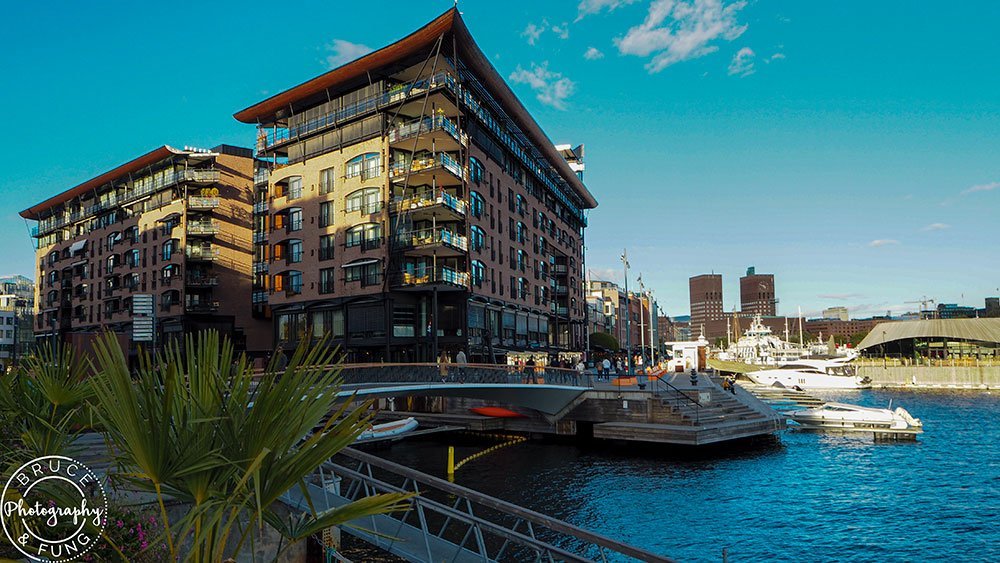
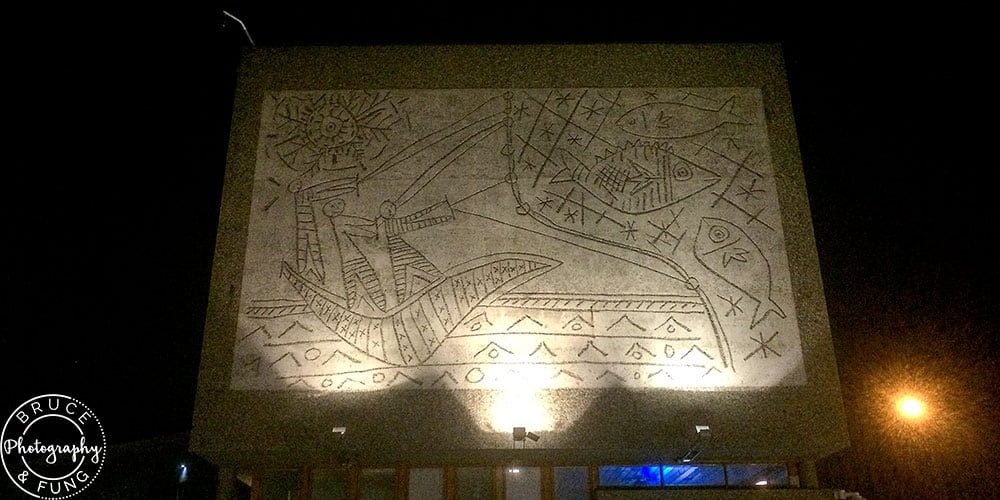
Above: The Fisherman
On a post-dinner downtown walkabout, we came across this striking mural. It is called The Fisherman, created in 1969 and one of five murals by Picasso and his longtime collaborator, Norwegian artist Carl Nesjar. These murals were set into the exterior and interior concrete walls of two modernist buildings in Oslo’s Regjeringskvartalet (“Government Quarter”) district. In June 2011, both buildings and their murals were nominated to become heritage-listed monuments, but just one month later, a terrorist detonated a car bomb near them that killed eight people on the site. Both buildings were damaged and the plans to designate them as monuments fell through. Since the attacks the buildings have stood empty, awaiting demolition.
In late July 2020, this mural, along with a companion mural (called The Seagull) inside the same building were removed, in spite of strong protests against the move. Both murals will be re-installed in the structure that’s being built to replace their original home, but construction on this new project won’t be completed until sometime in 2025. Until then, this 250-ton Picasso mural will be displayed elsewhere in the Regjeringskvartalet (try to say that five times in a row quickly) government complex.
The Vigeland Sculpture Park
The single definite must-see attraction in Oslo is the Vigeland Sculpture Park. It was windy and chilly during our visit, but the elements did not distract from the effect of walking amongst over 200 sculptures of people showing all the stages of life as well as the challenges of existence.

The sculptures were all designed by Gustav Vigeland (1869 – 1943), who is the most celebrated sculptor in Norway. All the figures were nude. Some were somewhat odd. There was a man being attacked by babies, a man throwing a woman over his head and more, reflecting a wide range of moods from anger to joy.
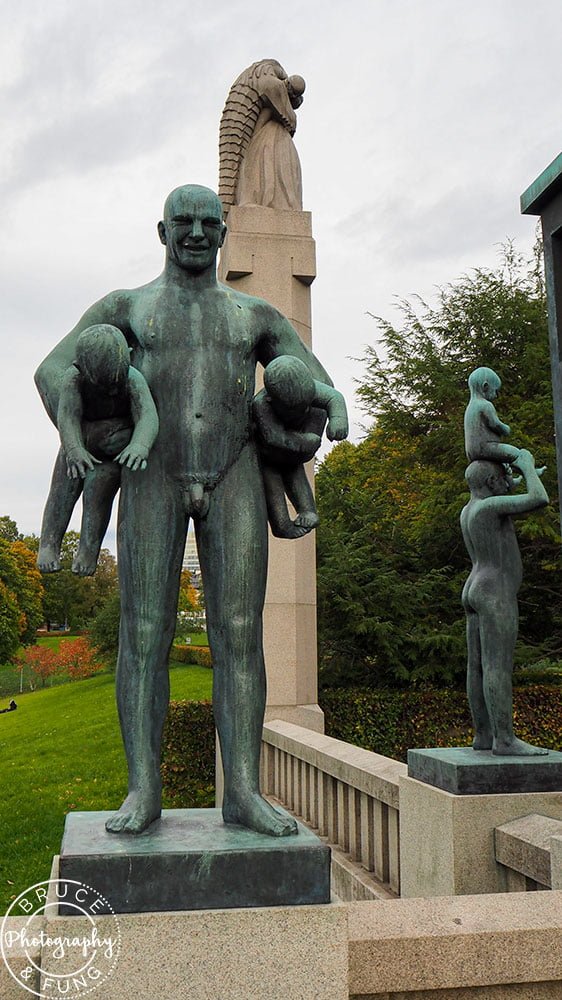
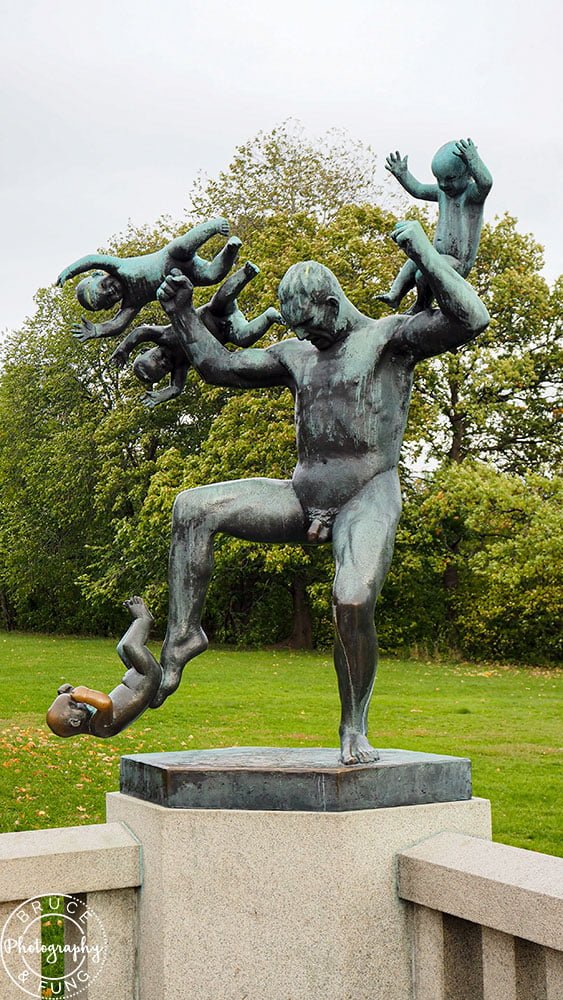
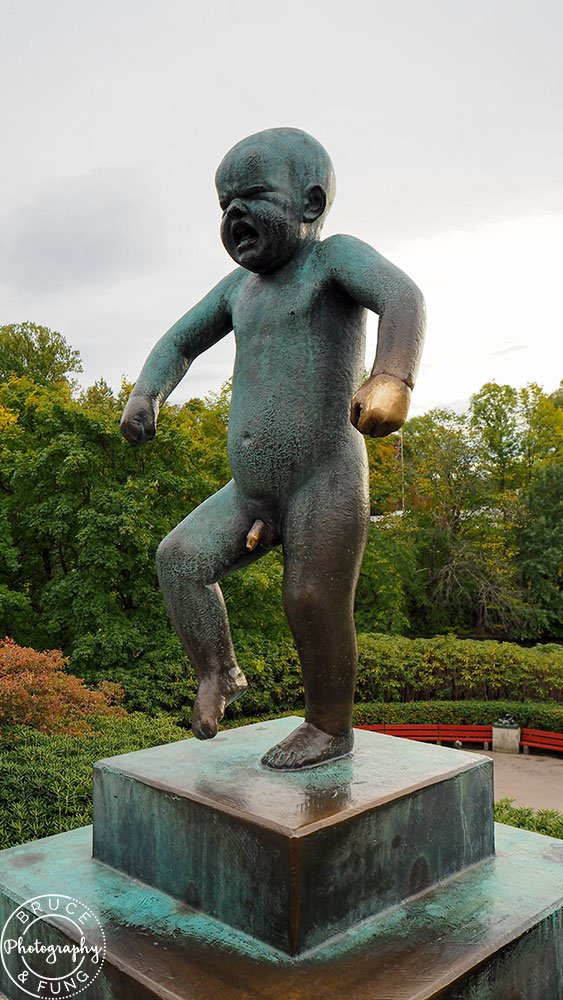
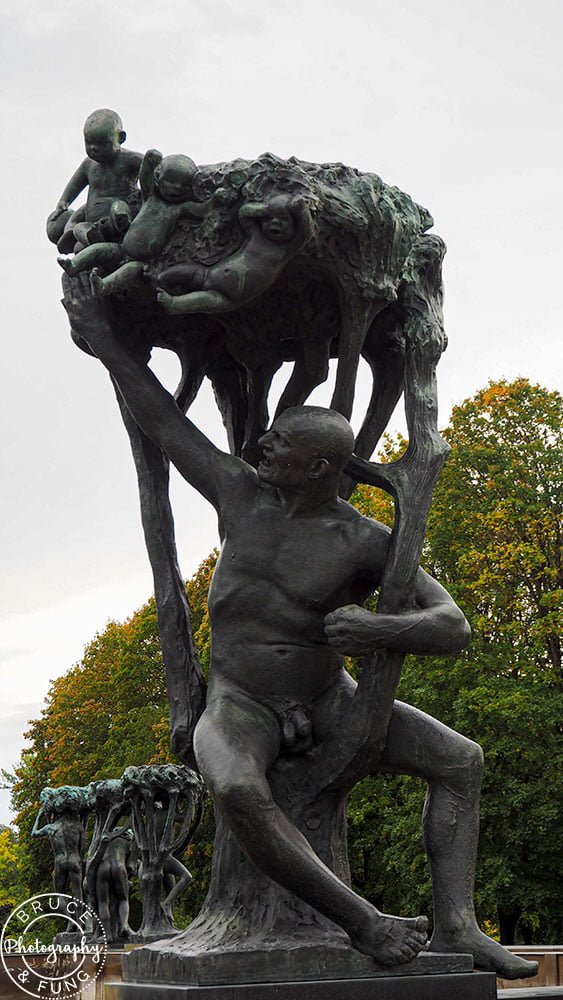
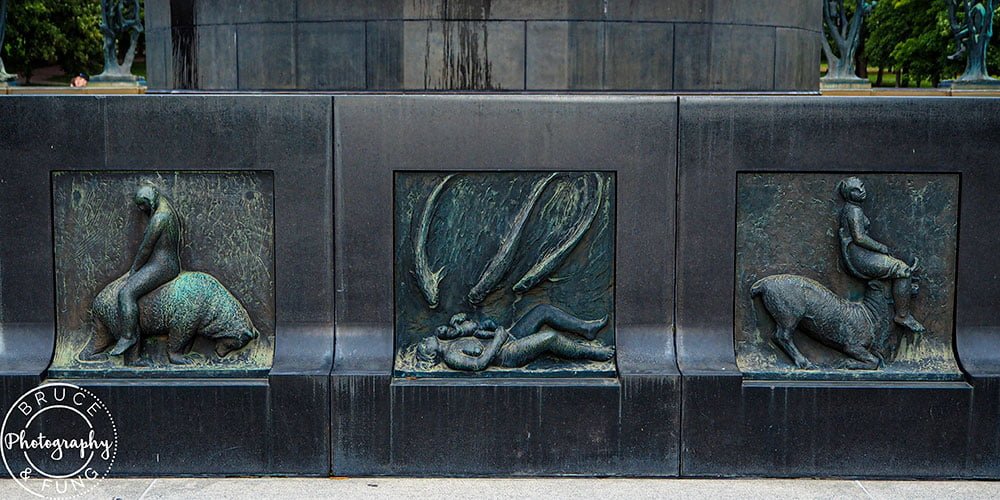
The high point of the exhibition is The Monolith. Carved out of a gigantic stone block, it is fittingly the highest point in Vigeland Park and depicts 121 human figures representing different stages of life (below left).

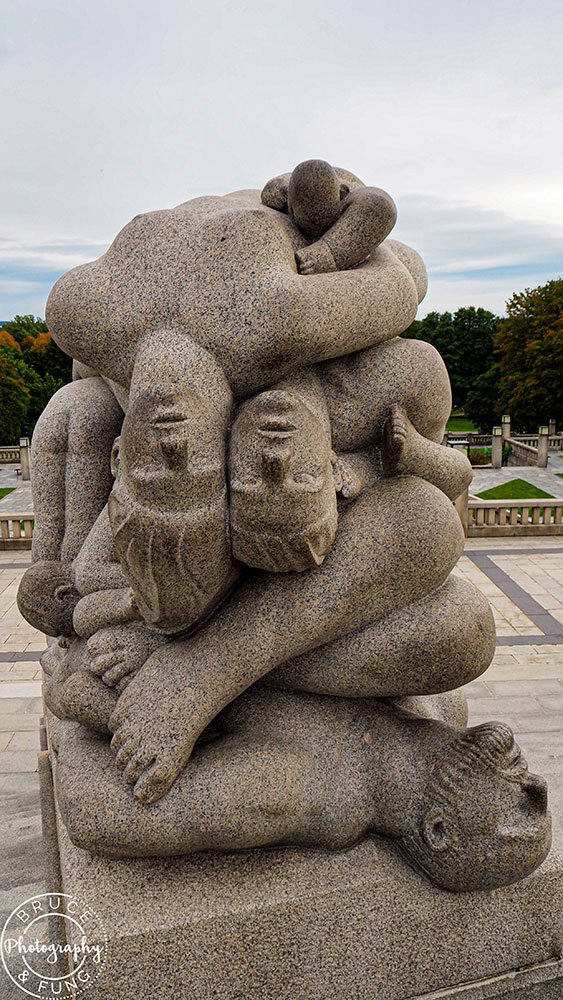
This is the biggest sculpture park in the world dedicated to a single artist and sits within Frogner Park, which is the largest public park in Oslo. Entrance is free and it’s open 24/7. It is rightly the most popular tourist attraction in Norway.
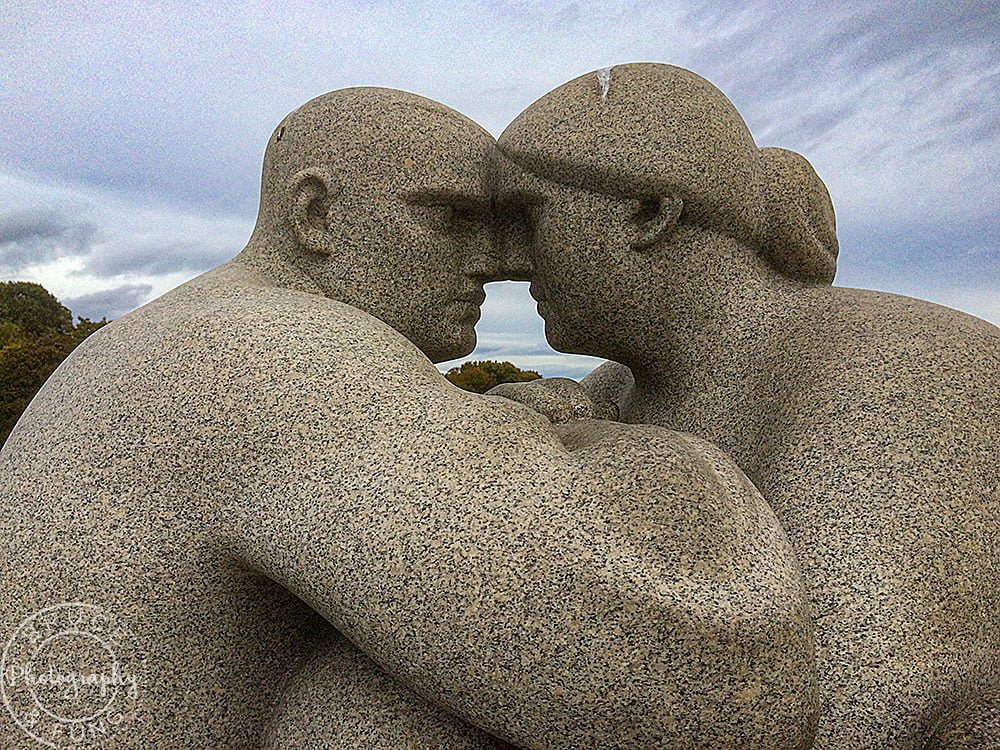
THE WAY OF THE VIKINGS
Another very cool outing was to the Viking Ship Museum (Vikingskipshuset), which boasts the world’s best-preserved Viking ships and artifacts from Viking tombs around the Oslo Fjord. The exhibitions center around three wooden Viking ships built in the 9th century, as well as small boats, sledges, carts, tools, textiles and household items. The fact that these invaders / explorers covered such a wide area using open boats with no shelter from the elements shows how tough they were.
Note: on October 1, 2021, the museum will close its doors for a renovation and extension project, re-opening in 2025 as the Museum of the Viking Age.
When we visited the museum, we took a bus from near our hotel. The buses go on an honor system, but every now and then the passengers are checked, which is something we never actually saw. We had passes covering public transport for the weekend, but Bruce’s relatives paid on board. When the driver realized that he did not have exact change to return, he said never mind and they rode for free. Nice.
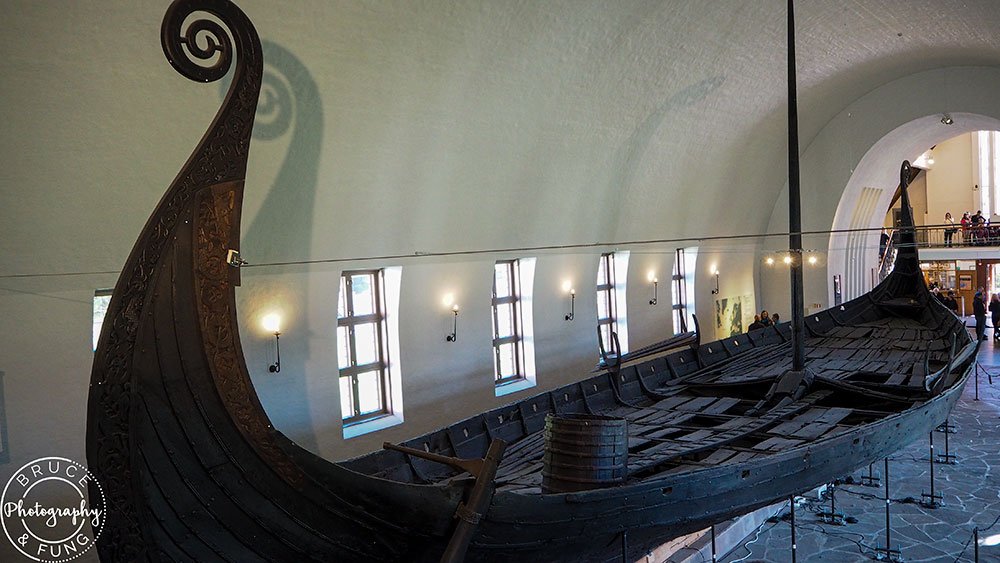
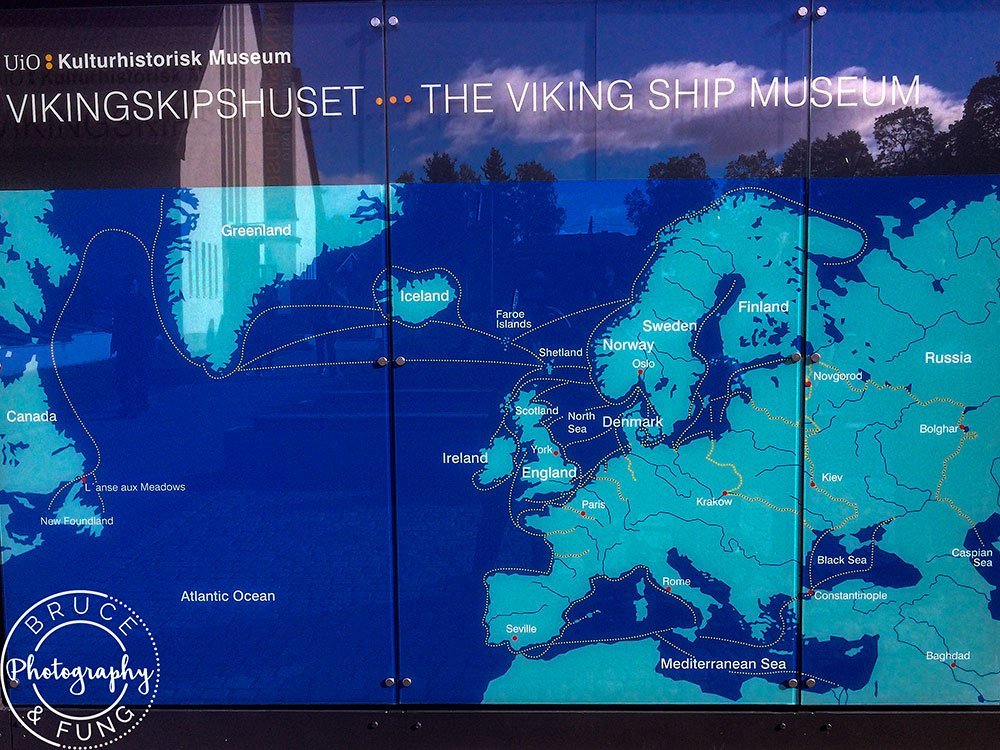
After our immersion into Viking history, we returned to downtown by a different mode of transport. We enjoyed a short walk through a neighborhood lined by oak trees (in the process of dropping their acorns) down to a ferry pier and took the Bygdøyfergene (boat to the museums). This ferry is very useful and runs every 30 minutes to/from the city hall (Rådhuset) pier and has two stops covering a number of Oslo’s museums, giving expansive city views from the sea.

ART APPRECIATION
Our third attraction that we could not miss during our weekend in Oslo was a visit to the National Gallery to see Edvard Munch’s The Scream in person (so to speak). There is a gallery exclusively dedicated to Munch’s works – the Munch Museum – but The Scream and a few other paintings by him reside at the National Gallery.
On a side note, there will be a new Munch Museum, simply titled MUNCH, opening on October 22, 2021, taking over from the older exhibition space. Adding to the changes, the National Gallery closed temporarily in January 2019, to facilitate the move to the new National Museum opening in 2022.
“Could only have been painted by a madman”. Did you know that this inscription is penciled on to the upper left of the canvas (but hard to see) within lines of color, written by Munch himself? We didn’t. We only learned later about this tidbit of trivia.
We’re not fervent art gallery aficionados, but we were impressed with this collection. Of course The Scream delivered, but there were quite a few other pieces that held our attention during our walk-around.
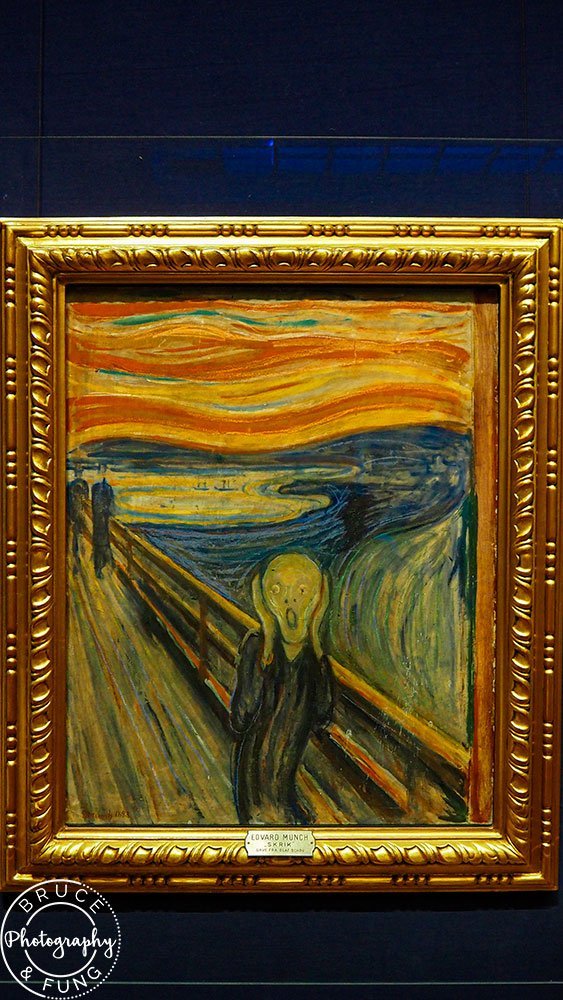
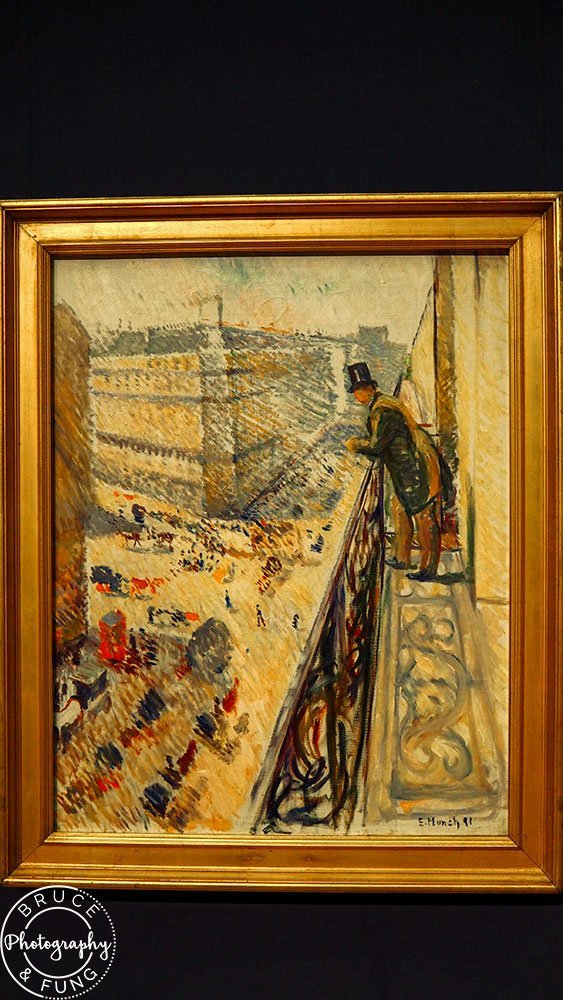

Above right: This gloomy painting is the only one of the 43 self-portraits painted and drawn by Van Gogh that is known for certain to have been created while he was suffering from psychosis. Van Gogh admitted himself to a small asylum in Saint-Rémy, France, in May 1889 after the people of Arles signed a petition saying that he was dangerous. While there he was struck down by a severe psychotic episode in July that lasted for a month and a half. In spite of his deteriorating mental health, Van Gogh painted some of his his most renowned works there. He began painting irises, working from the plants and flowers he found in the asylum’s garden and he also painted “The Starry Night” while staying there: “This morning I saw the countryside from my window a long time before sunrise, with nothing but the morning star, which looked very big,” he wrote to his brother Theo. He later painted more self-portraits in which he looked in better shape, but a year after this portrait was painted he committed suicide.
A WEEKEND IN OSLO: WELL WORTH IT
Those were the sights we enjoyed on our weekend in Oslo. There are plenty more museums, parks and other attractions in this city, so we got just a taste of Norway’s capital. We were very glad that we took the time to visit this vibrant city.
MORE EUROPEAN CONTENT
Memorable Meals: Beaulieu-sur-Mer
Into the Roquefort Cheese Caves
When a Pepperoni Pizza is Not a Pepperoni Pizza
Hallstatt, Austria: Very Pretty, Very Crowded
The Galimard Perfume Creation Workshop



